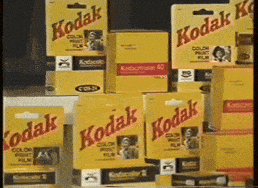- The Value Investor
- Posts
- Topic 7.5: Case Study: Avoiding a Value Trap
Topic 7.5: Case Study: Avoiding a Value Trap
Why did Kodak fail? This deep-dive case study dissects Kodak's collapse, revealing the critical warning signs of a value trap. A must-read for investors wanting to protect their capital.

Case Study: Avoiding a Value Trap
Welcome back, class.
Over our last two sessions, we've celebrated the incredible triumphs of value investing. We saw how courage and rational analysis during the American Express and Meta Platforms crises created legendary fortunes. These stories are intoxicating. They represent the thrilling upside of our discipline: finding that diamond in the rough, that wonderful business on sale.
But now, we must discuss the dark side. Because for every brilliant bargain, there lies a trap. A stock that looks cheap, feels cheap, and has all the surface-level characteristics of a classic value investment, but is actually a financial black hole, poised to swallow your capital whole. This is the single greatest danger to an aspiring investor—the siren song of the Value Trap.
To arm ourselves against this threat, we must perform an autopsy on one of the greatest corporate deaths in modern history. We will study a company that was once a global monopoly, a cultural icon whose brand was a household name, and a titan of industry that seemed invincible. A company whose stock looked irresistibly cheap for years as it fell from its peak. That company is Eastman Kodak.
What separates a brilliant contrarian bet like Meta from a financial graveyard like Kodak? Why did investors who bought this "cheap" stock lose everything? The answer lies in a series of fatal flaws and glaring red flags that were visible long before the end—if you knew where to look. We are about to dissect Kodak's fall, step-by-step, to build the ultimate checklist for spotting a value trap before it springs.